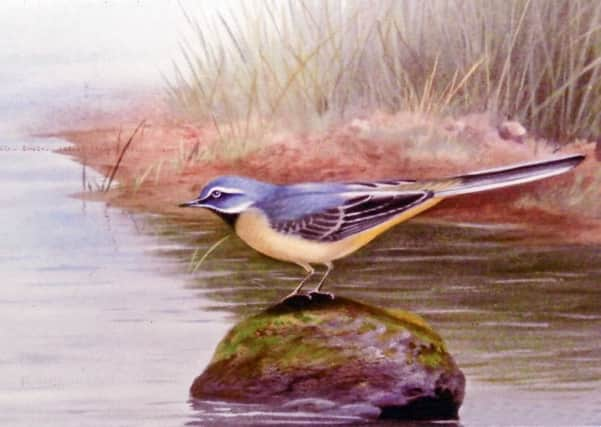Nesting birds voice annoyance at any intrusion


You can almost imagine the miller sitting by the swirling black water with his wedge of cheese and pickled onion, slice of cottage loaf and tankard of ale at noon. Did he watch Willy Wagtail awhile as he paused to eat amid the flour dust and the grinding wheels?
Grey wagtails still live there as they did a thousand years ago. In their grey-blue and yellow uniform they bob and curtsey to the water, wagging their tails with a gentle rhythm like a Chopin nocturne. Sussex folk called them Dishwashers or Dun Wagtails, while up north they were Nanny Washtails or Grey Wagsters.
Advertisement
Hide AdAdvertisement
Hide AdThe greyish yellow stones of these old bridges with buttress pillars that allow fallen branches to sheer off to one side in the flow are the homes for grey wagtails. They will nest beneath the arches in the gloom where sometimes the swallows nest as well. The wagtails makes a nest of rootlets, dead grass and moss.
I watched one near Chithurst collecting the hair from pony tails once, that had snagged on barbed wire fences. Now and then you would see a feather in the cup. A tiny field bridge on a Rother tributary between Petworth and Midhurst was home to greys last year when I walked that way. The birds perched in a nearby alder tree and scolded me when I made to sit down and eat my cheese and pickled onion sandwich. So I moved on, and sat down well away on the river bank. I was just getting comfortable when a greater spotted woodpecker returned to the nesting hole in an old alder tree and made such a fuss as it held a beakful of food for its chicks which were leaning out of the hole, that I had to get up again and wander downstream to the main river hoping nothing else would object to my presence.
A kingfisher for instance might have its yard-long tunnel in the winter-scoured mud cliff where I settled yet again, hoping to enjoy that sweet and yet astringent taste of the vinegar which had kept my pickled onion safe for two years. I examined the tiny cliff just in case, for it would be awful to disturb Halcyon at their precious nest.
All was well, in that direction, but within seconds I had a whitethroat warbler churring annoyance from a small bramble bush on the cusp between river and field. It was no, I had to move on, and ended up standing by a metal gate on a concrete bridge, ignoring the subdued “threep, threep” of an unhappy chaffinch which had a neat cup of moss and lichen nearby.
Advertisement
Hide AdAdvertisement
Hide AdThe month of May and early June is like that, if you know your bird calls and the habitats that imply these denizens. The ancient miller no doubt did not allow any disturbance to his pickled onion and cheese sandwich, whether on the Rother, the Dart, the Dovey or the Tweed.